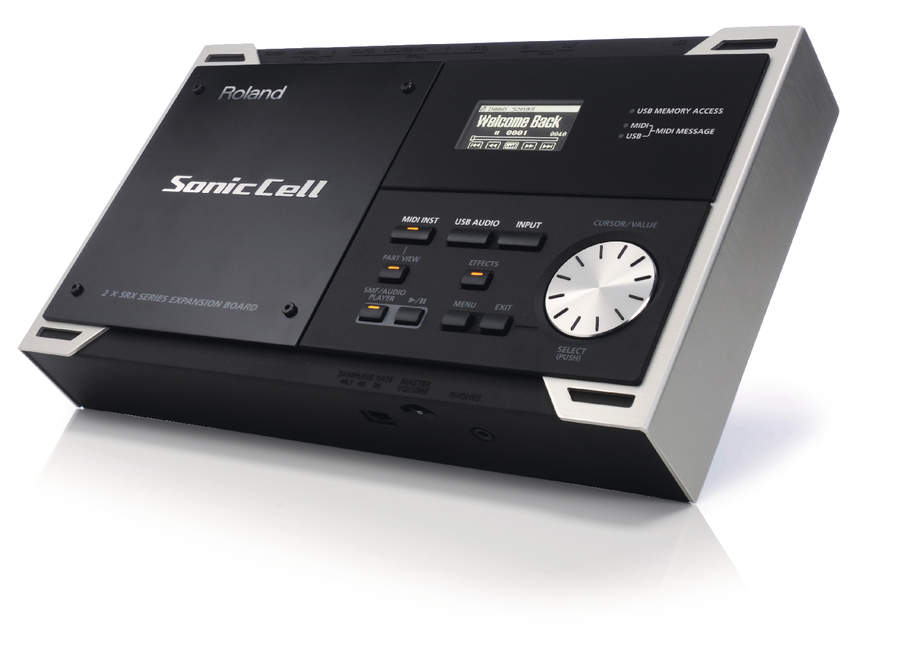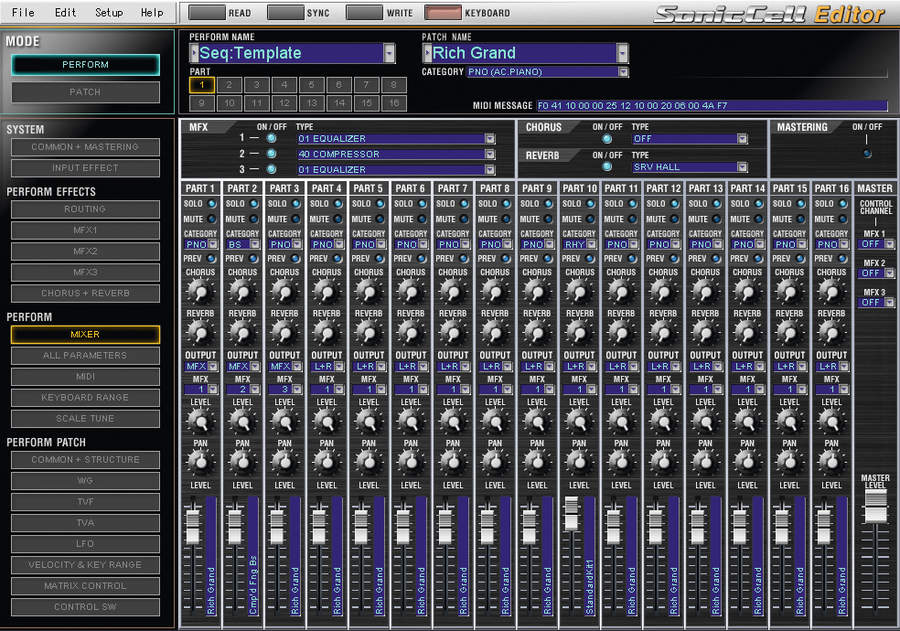MusicRadar Verdict
It's solid rather than mind-blowing, but if you're new to computer-based music production, the SonicCell may be for you
MusicRadar's got your back


Back in the 1990s, Roland dominated the synth module market. The JV1080 in particular was legendary, but the company haven't quite moved with the times. Many of us feel that Roland should have put out software versions of some of their modules by now, but they've consistently - some might say stubbornly - refused to put their name to products that have to be used with a Mac or PC.
This isn't to say that the company aren't interested in computer musicians, though. They may not have become a software developer, but they are adapting their technology to suit a new generation of producers. As a result, we have products like the SonicCell: a curious box that serves as a hardware synth, USB audio/MIDI interface and portable backing machine.
Appropriately, the SonicCell has a decidedly retro appearance - at irst glance it could be mistaken for an ageing desktop CD deck, and one almost expects to ind an eject button among its controls. Its design grows on you, though, and the thing is certainly well put together.
The hard Cell
On the top, you'll ind a disappointingly small display, a few clearly marked buttons, and the catchily named Cursor/Value dial, which looks like the clock from Channel 4's evergreen Countdown. Turning this enables you to navigate the display, while pressing it conirms your selections.
To the left of this control area sits a removable plate that's held in place by four screws. Undo these and you can install up to two of Roland's SRX Series Wave Expansion Boards (see SRX appeal).
Audio interface connectivity is dealt with on the back panel. You get a pair of inputs - one of these is a combo jack that can be switched to accept line, guitar or mic signals, while the other is a regular 1/4" line input. The input level can be set with a knob, though this is too small and iddly for anything other than 'set it and forget it' purposes.
A pair of 1/4" outputs completes the audio I/O, and there are MIDI In/Out sockets, too. USB sockets are on hand to deal with computer hook-up and the plugging in of a USB memory stick (you can play back MIDI, WAV, AIFF and MP3 iles from such a device), and theres also a DC In socket for the included power supply.
The front panel hosts a switch to adjust the sampling rate (44.1, 48 and 96kHz are on ofer), a minijack headphones socket and a volume control (again, this is needlessly iddly).
Although it's a multitasking module, it's the SonicCell's synth section that holds the most appeal. Based on tried-and-tested Roland technology, it's built around 128MB of wave memory and delivers 896 patches (plus a further 256 in a GM2 soundset), 32 rhythm sets (nine GM2) and 64 performances (each of which can contain up to 16 parts). In addition, there's space to store your own user creations: 256 patches, 32 rhythm sets and 64 performances.
Sounding off
The SonicCell's soundset covers a bit of everything - you've got keyboard instruments of every description, guitars, basses, strings, synths, woodwinds, brass, percussion and more. This is designed to be a go-to module when youre working on any track and, although these patches don't grab your ears in the way that they might have done a few years ago, the majority are inely crafted and have that lush Roland quality to them. You wouldn't want one of the pianos, for example, to go toe-to-toe with a specialist multi-gigabyte ROMpler, but then that's not really the point.
You can also apply a range of rather ine efects. There are chorus, reverb and multi-efects modules, and a mastering efect that works on the SonicCell's output. Efects can be applied to audio inputs, too, for monitoring and/or recording purposes. Because all the sound generation and efects are handled by the SonicCell hardware (and then mixed with your regular DAW output before arriving at the SonicCell's own outputs), none of this taxes your CPU. You cannot, however, route the SonicCell's sounds into your DAW, which is a bit of a drawback.
Working with the SonicCell is made much easier by the inclusion of a software editor, which works standalone or as a VST or Audio Units plug-in. This gives you complete control of the unit's entire featureset from within your DAW, and once you've got it running, the SonicCell makes much more sense as a product for computer-based musicians. On the downside, some of the editor's routing screens may confuse beginners, as will the rather verbose and overly complicated SonicCell manual.
Still relevant?
As we said earlier, this is a curious product. Its blend of features is one we haven't seen before, yet rather than coming across as innovative, the SonicCell looks, feels and sometimes sounds slightly dated.
But although it's not cutting edge, this box is undeniably useful. Many of the sounds it contains have stood the test of time and will continue to do so, and because there's an audio interface too - albeit one with limited connectivity - integrating them into your productions is easy. The music ile playback functionality will only be of use if you play live, but at least its inclusion doesn't get in the way.
If you're already tooled up with audio hardware and a few soft synths, you'll probably pass on the SonicCell, but if you're just getting started, it's worth considering, especially if you're coming from the world of hardware, as you may feel more at home here. It doesn't set the world alight, but it forms a solid base on which you can build.
Want all the hottest music and gear news, reviews, deals, features and more, direct to your inbox? Sign up here.
MusicRadar is the internet's most popular website for music-makers of all kinds, be they guitarists, drummers, keyboard players, DJs or producers.
GEAR: We help musicians find the best gear with top-ranking gear round-ups and high-quality, authoritative reviews by a wide team of highly experienced experts.
TIPS: We also provide tuition, from bite-sized tips to advanced work-outs and guidance from recognised musicians and stars.
STARS: We talk to artists and musicians about their creative processes, digging deep into the nuts and bolts of their gear and technique. We give fans an insight into the actual craft of music-making that no other music website can.
